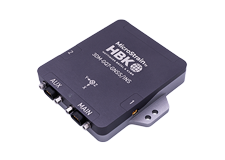Recent
-
-
MicroStrain by HBK at XPONENTIAL 2024
May 7, 2024 / Inertial
-
-
-
Introducing Version 4.0.0 of the MicroStrain ROS Driver
Jan 29, 2024 /
-
-
-
Enhancing Vision-Based Robots with IMUs
Dec 19, 2023 /
-
7 Key Improvements to Our 5th Generation Miniature Inertial Sensors
- By Beth /
- Published Fri, 06/01/2018 - 15:55

Here at LORD Sensing, we’ve been driving the innovation of inertial sensing technology for a long time now. Our commitment to constant improvement and increasing functionality in an ever-shrinking footprint is unmatched. This passion for not only meeting but exceeding customer expectations, combined with years of experience and expertise leads to the 5th generation of miniature inertial sensors. The GX5 family showcases the latest enhancements in the popular 3DM-GX series of IMU, VG, AHRS and GPS-INS.
With better performance in the same footprint, this is truly a drop-in replacement for the previous-generation GX4 inertial sensors, making it extremely simple to upgrade. However, there are a few key performance and API improvements that you should know about to maximize the performance of the GX5 series.
What's New?
Better Accelerometers
By far, the most significant sensor improvement in the GX5 is the accelerometers. They feature a bias instability of <±0.04 mg with an industry-leading noise density of 25 µg/√Hz for the 2g version. These improvements, combined with those in the Kalman Filter, result in extremely accurate position, velocity and attitude accuracy even with aiding anomalies and outages, rivaling the performance of systems more than three times the cost.
Better Gyro Performance
By moving to an ultra-high performance 24-bit ADC and adding other improvements to the data conditioning circuit, the GX5 gyros are a further refinement of the highly accurate ones in the GX4 series. The room temperature bias instability has improved from 10°/hour to 7°/hour and overall bias drift is half of what it was before.
Multi-Constellation GNSS tracking
The GX5-45 GNSS-INS and GX5-35 GNSS-AHRS include a new multi-constellation receiver that can simultaneously track up to 32 satellites from the GPS, GLONASS, BeiDou, or Galileo constellations in addition to the SBAS systems such as WAAS, EGNOS, and MSAS. By comparison, the GX4 tracked 16 satellites and the GPS constellation only. This expanded access to positioning information makes the performance in areas of restricted sky view such as urban canyons much more reliable and accurate.
Auto-Adaptive EKF
The GX5-45 GNSS-INS, GX5-25 AHRS, and GX5-15 VRU share our new auto-adaptive EKF with up to 34 states (vs. 25 for the GX4-45). The added states allow the GX5s to track and correct for more error sources, enabling them to automatically adjust error thresholds for detecting anomalies in the gravity vector and magnetic heading measurements.
Auto-Calibrating Magnetometer
Because of the added states in the EKF and the increased processing power of the Cortex M7 MCU, the GX5s can auto-calibrate the magnetometer in-run and in-situ. The ability to recalibrate in the field at any time without any external calibration tools and the auto-adaptive monitoring of magnetic anomalies, make the magnetometer a much more accurate heading reference in challenging applications.
Different Range Options
The GX5s offer four gyro rate range options and five accelerometer range options. The GX4s offer four gyro rate range options and two accelerometer range options.
Enhanced MIP® API Commands
To support the new GX5 features, some MIP® API commands have been expanded and others have been added. For a detailed explanation of the changes, see Migrating from the GX4 to the GX5 .
Thanks for subscribing!
SIGN UP
Get updated when new All Blogs Blog articles are posted.










